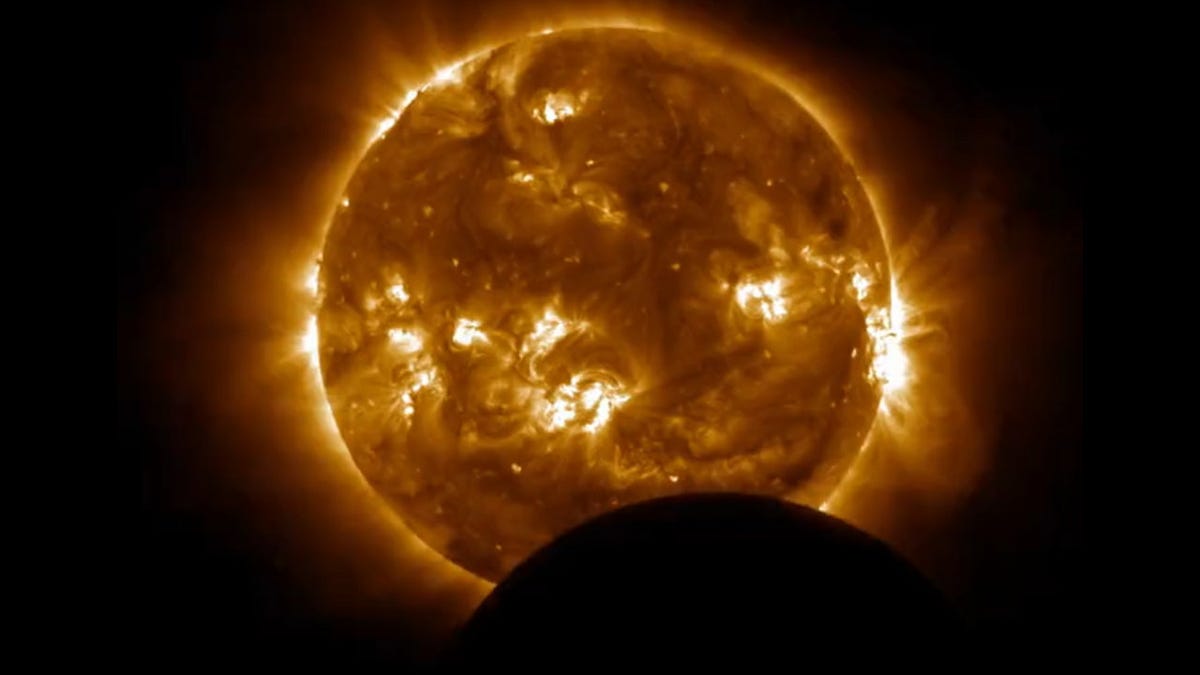See a Glorious Video of the Weekend's Solar Eclipse as Seen by Satellite
Nom, nom, nom. The moon took a bite out of the sun.
A partial solar eclipse flitted across parts of South America and Antarctica over the weekend. It was a narrow viewing area for people on Earth, but the National Oceanic and Atmospheric Administration's GOES-16 satellite got an excellent look at the celestial event.
GOES-16's Solar Ultraviolet Imager, aka SUVI, is a telescope that stares at the sun to watch for activity from our closest star. It helps with studying and forecasting space weather events that can have an impact on Earth. Weather satellite enthusiast Luc Fontaine shared the SUVI eclipse footage on Twitter.
#GOESEast #GOES16 #GRB #SUVI
— Luc Fontaine (@coyotefxl) May 1, 2022
Solar Eclipse as seen from GOES-16 satellite at noon today (EDT). Fe195 wavelength. pic.twitter.com/2r7uLorNOu
GOES-16 is able to see the sun in multiple wavelengths, so Fontaine posted a slightly different view of the action.
#GOESEast #GOES16 #GRB #SUVI
— Luc Fontaine (@coyotefxl) May 1, 2022
Solar Eclipse as seen from GOES-16 satellite at noon today (EDT). He303 wavelength. pic.twitter.com/F6EvF4dJKX
There are two solar eclipses this year, both partial. That means the moon doesn't entirely block the sun, but rather takes a rounded bite out of it while casting its shadow on Earth.
Sun-watching satellites are keeping busy. Our star has been feeling pretty peppy lately, spewing out energetic eruptions, including the strongest solar flare in almost five years. The second solar eclipse of 2022 will come along Oct. 25. Until then, you can revel in the striking rerun of the April 30 eclipse from GOES-16.


